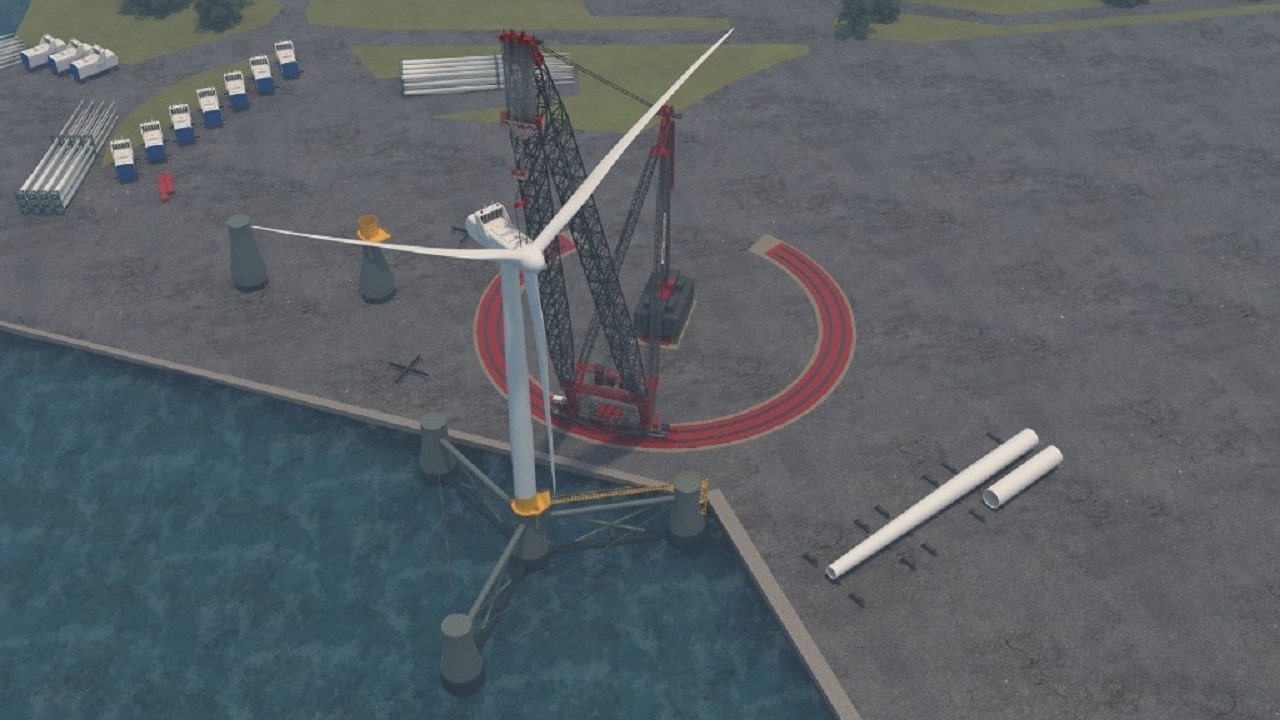
Fixed bottom turbines and their foundations are growing fast. As the industry moves towards 20MW turbines, floating wind components continue to grow in size and weight. This increases the need for a modular approach to speed up the construction process and allow developers to install more floating turbines in reduced weather windows.
With the launch of the SK6,000, Mammoet is providing the next-generation crane needed to install next-generation turbines. The first parts of the new 6,000 tonnes ring crane will soon be delivered to Mammoet’s engineering nerve center in The Netherlands.
Mammoet, a Dutch company that specializes in engineered heavy lifting and transport of large objects, will continue with the fabrication and production to get it ready in time for its delivery in 2024.
The company says that the new ring crane, the SK6000, will become the world’s highest-capacity land-based crane and can be fully operated using electric power, allowing clients to execute projects in a sustainable way.
The SK6000 shares the same engineering DNA as its predecessor, the SK350, which employs similar design principles and lifting techniques. Much of the crane’s technology has been working successfully and safely on project sites around the globe for many years.
The SK6,000’s proven technology allows the topside modules to be lifted and installed from one single position without any need to rotate the hull, which is a costly and time-consuming exercise. Its unique design, consisting of a centralized ballast, means that there is no need to install a full ring track. This frees up site space by up to 45%, allowing operations around the crane to continue and the FPSO (floating production storage and offloading) to launch faster.
The new electric crane is containerized, enabling swift mobilization and on-site assembly, providing ultra-heavy lift capacity wherever it is needed. It has been designed with next-generation offshore wind farms in mind and will serve all global energy markets where additional lifting capacity is needed – both onshore and at sea.
As offshore wind components grow in scale and in weight, more lift capacity is needed. The SK6000 delivers this capacity and unlocks a major design constraint. The company says its latest innovation will enable customers to integrate higher and bigger turbines, and launch heavier foundations, be they fixed or floating.
In the conventional energy sector, the SK6000 allows offshore and floating production projects to reduce integration time by building even larger topside modules. On land, it helps refineries to reduce downtime by removing and installing larger components with minimum disruption.
World’s largest electric crane is being built in the Netherlands
Source: Tambay News

0 Comments